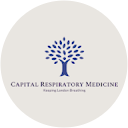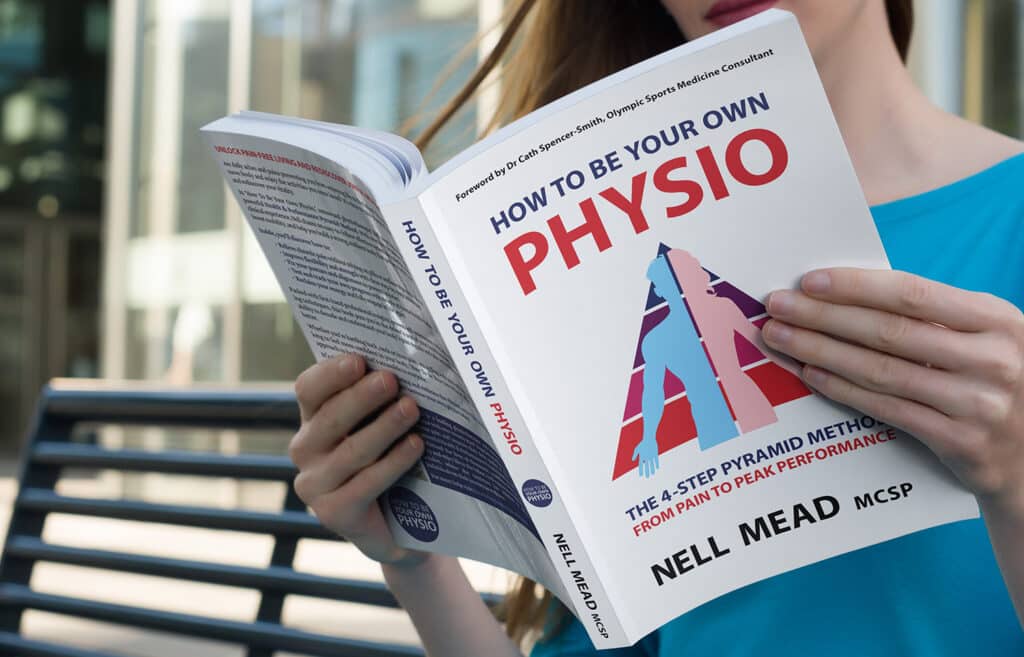October 2022 – disaster
In October 2022, on a tennis court, I pushed off my left foot and felt something go crunch inside my left knee. Thinking it was a degenerate meniscus, I rested and rehabilitated it and tried to get back to tennis a few weeks later.
Over the next couple of months it became increasingly clear that my knee was not happy. Tennis was painful, and even going upstairs made me think twice. Eventually I went to see my friend Dr Cath Spencer-Smith who arranged an MRI scan, and when we saw the images, we were both disappointed to see a femoral chondral defect – in other words a hole in the cartilage that covers the end of my thighbone. The hole was around the size of a 5p piece but unfortunately was directly in the spot where you weight bear.
March 2023 – knee surgery
I immediately contacted my friend and colleague Mr. Ian McDermott, a fantastic knee surgeon with whom I collaborate regularly, and he agreed that operating would be the best solution. So in March 2023 I went under the knife and Ian performed nano drilling to the patch of bare bone. The aim of this was to make the bone bleed; the blood and bone marrow should then fill the hole like a scab, and after period of months the scab should form fibrocartilage – a type of scar tissue similar to the original cartilage (though not the same).
March 2024 – follow up
One year after the surgery, after lots of rest and very limited exercise so as not to interrupt the healing process, I went back to see Ian for a follow up. My knee was not feeling great. Even sitting on the exercise bike was irritating it, and I was still struggling on stairs. I felt there was no way I could get back to tennis or even light jogging.
Ian examined my knee in clinic and superficially it appeared pretty good. The muscles were working, the range of movement was full, and I could walk without a limp. I could even do a deep squat. However, jumping and landing was out of the question, so Ian opted to arrange a fresh MRI scan to check for the structural healing.
When the new images came through, we were both very disappointed to see that apparently a year after the surgery I had managed to grow absolutely no scar tissue: there had apparently been no healing at all.
April 2024 – surgical options
I had a long chat with Ian and he explained that the next level of surgery would be an Episealer. An Episealer is essentially a mini knee replacement, so a metal plug is inserted to fill the hole in the cartilage.
The problem with an Episealer (in my case) is that the hole is in a very awkward place in my knee. In order to reach it, Ian would have to open up my knee, peel the kneecap sideways to expose the hole, and then bend my knee to do the surgery. The issue with this, as it is with knee replacement surgery, is that the kneecap does not like being removed and put back on again. This is the bit that I always think takes the most recovery time after a knee replacement. Now, I may need a knee replacement one day, but at 46 I would like to avoid it for as long as possible!
April 2024 – a new hypothesis
I was hugely disappointed that my knee hadn’t taken the opportunity to heal as we’d hoped, and started wondering why. I have a really great surgeon, and I’d followed his post-operative instructions to the letter – so what had gone wrong?
So I went to talk to my friend, super neuro rehab therapist Elizabeth Banks. Elizabeth and I think similarly in many ways, but we look at the body through different lenses. Where I look at joints and muscles and fascia, she looks primarily at the calibration of the systems that we don’t think about. For example, we just assume that our eyes and our ears will talk to each other and to our brains, and that all of these systems know which way is up. Unfortunately that isn’t always the case, and many of us struggle unwittingly with those systems not being optimally calibrated, with knock on effects such as dizziness, clumsiness, excessive muscle tension, inability to move smoothly, poor balance – the list goes on.
Where Elizabeth’s lens and mine overlap however is in our belief that if one thing is wrong, the body and brain do their best to compensate. And I have had multiple injuries to my left leg over the years, so there’s been a lot to compensate for!
- I dislocated my ankle age 19.
- I hit my foot badly, falling downstairs in 2019.
- I had three bad calf muscle tears between 2014 and 2020.
- I tore the labrum in my left hip in 2018.
But my knee, before I stepped onto my left foot and destroyed the cartilage, had felt normal.
I therefore hypothesised that perhaps my knee was the only link in my leg that had been trying to compensate for all of those old injuries – in effect that my knee had been trying to be a foot, ankle, calf, knee and hip all by itself. And if that’s the case, no wonder it got overloaded! And because I hadn’t rehabbed all those injuries before having knee surgery, then perhaps my knee hadn’t realised that it didn’t still have to be overloaded.
I went to Elizabeth with this hypothesis and we agreed to see if we could rehab all of the old injuries so that my knee only had to be a knee. We wondered whether it might be able to cope with a bit of missing cartilage, if its only job was to be a knee, rather than trying to be a whole leg’s worth of function.
April 2024 – testing the hypothesis
Elizabeth then did some testing of her own, and found that in addition to my knee trying to provide function for my whole left leg, my eyes weren’t working together very well. I had LASIK surgery on my left eye in 2010 and because I could see better after that surgery than I ever had before, it didn’t occur to me that the eye muscles might need rehab and that the lack of it might have knock-on effects to the rest of my body. I also had a fall (off a cliff, onto my head, inevitably) when I was 23, and although I’d thought I was fine, Elizabeth still found some balance issues which – you guessed it – were also affecting my left knee.
May 2024 – starting rehab
Doing rehab with Elizabeth is unlike anything I’ve done before. Some of it isn’t super different to the rehab I get my own patients doing – we’ve been doing some movement patterning work where I’m drawing circles in the air with my leg, and lunges with added leaning and twisting to encourage particular muscles to work more efficiently. But a lot of it is quite different – for example, staring into the distance to practise divergence (and buying a bigger computer monitor as she thinks my tiny screen was contributing to poorly controlled convergence) or moving my finger and following it with my eyes but not my head, or vice versa.
It’s been a fascinating and reassuring process. Even quite early on in our treatment sessions, I had sudden moments when I found myself able to do things – like hopping – that I hadn’t been able to do a few minutes earlier. The nervous system is so incredibly powerful and Elizabeth is clearly expert in manipulating it. My body likes its compensation patterns though, so retraining them is taking time – but I am feeling much more optimistic and although I’m not yet back on a tennis court, I’m generally in less discomfort and more functional.
And even if it eventually turns out that my knee can’t cope with even the normal duties of a tennis playing knee and I do need surgery (which is still Plan B), I’ll be much better prepared for it, as my knee will have learned that it doesn’t have to compensate for my left leg and left eye!
So what…?
Well, ultimately, restoring better function is what good rehab is about, whether that’s musculoskeletal physiotherapy or movement neurology. Because there are lots of us (including a huge number of the patients I see every day in clinic) who don’t have perfect MRIs, whether we have disc bulges, scarred ligaments, inflamed tendons, arthritis or even missing chunks of cartilage. But whether we are surgeons or therapists, we don’t treat the MRI, we treat the person; so if there is a way to restore the level of function that we want, and alleviate symptoms without having to resort to being cut open (and this is what Elizabeth and I help the vast majority of our patients to achieve) then this is absolutely the right course of action.
Surgery is the correct course of action only if there is a structural defect that high quality rehab can’t overcome well enough – and in my case, “well enough” means being able to play competitive tennis without knee pain.
I’ll keep you posted!
If your MRI is a bit funky and you want help restoring function and getting rid of symptoms, call my team on 0207 175 0150, or you can contact Elizabeth Banks at themovementbank.com







